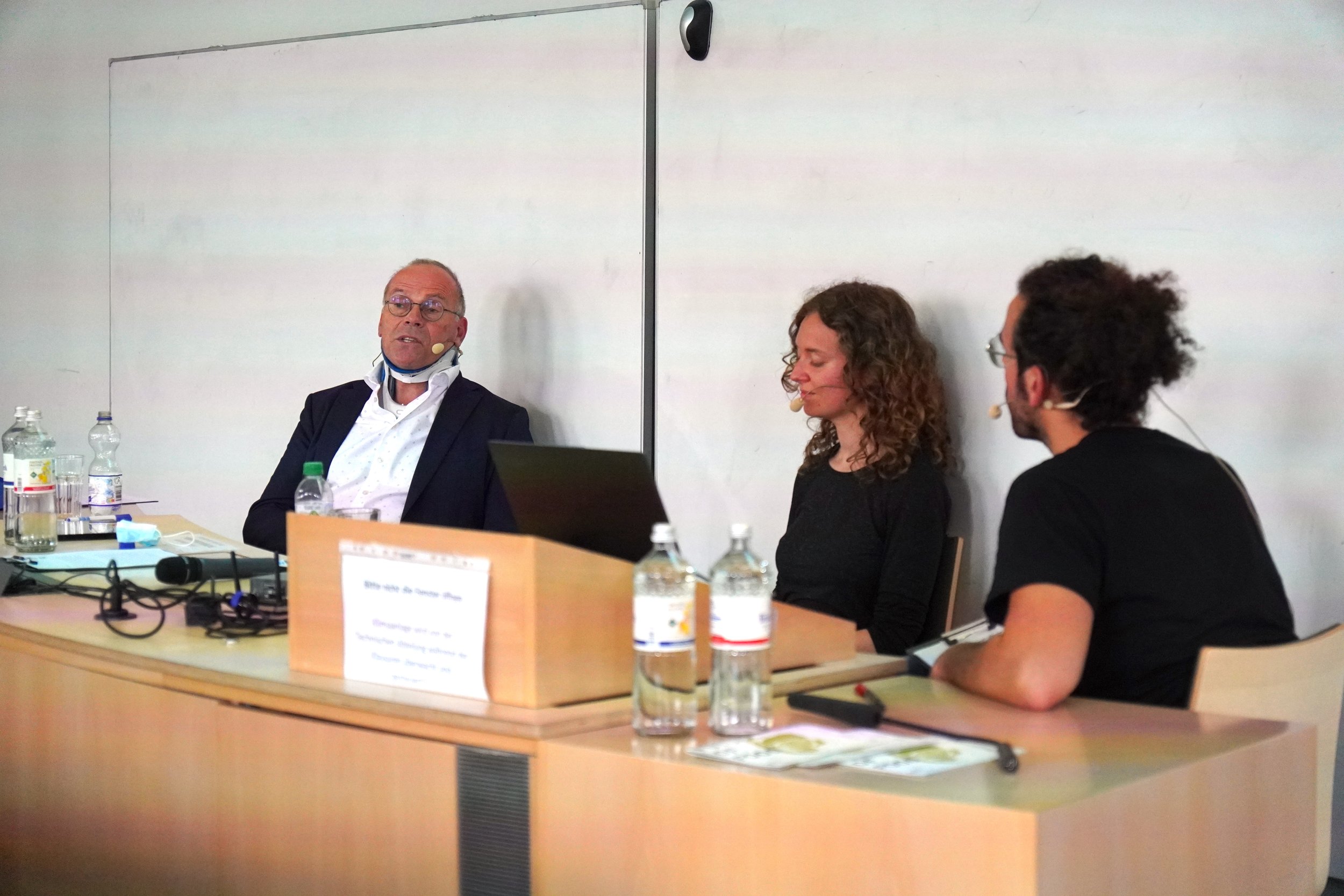Lab-Grown Meat – A Solution for Sustainable Food Production?
Methane emissions from cattle, land consumption for the production of animal food, cruel conditions in which animals are kept – the negative consequences of factory farming are well-known. But how are these problems to be solved in a world whose population continues to grow – and which is developing an ever greater hunger for meat.
This is where lab-grown meat comes in: small cell samples are taken from animals, which are then grown in the laboratory to many times their original size. As a result, significantly fewer animals need to be bred to produce the same amount of meat. But this innovative technology is associated with open questions, which were discussed at this panel among scientists, entrepreneurs and activists.
Professor Mark Post is a researcher at Maastricht University, founder of Mosa Meat – a lab-grown meat company – and creator of the worldwide first lab-grown meat burger. Mathilde Alexandre is a Senior Project Manager at ProVeg International, an organization lobbying for vegetarianism and veganism. Jan Fritsche – an experienced moderator and alumnus of our symposium – moderated this discussion.
Mathilde Alexandre supports lab-grown meat as an important alternative to traditionally produced meat. Although plant-based alternatives are already widespread around Europe and get supported by ProVeg International, lab-grown meat may offer a solution to the problem that many consumers do not want to cut out meat from their diet entirely, especially since a large part of the world’s population desires to consume more meat than they already do. However, according to Mark Post, marketing and trust play an important role in this, as many consumers may consider lab-grown meat “unnatural”, despite the fact that most of our food contains “unnatural” ingredients. An approval of the European commission – a necessary step to supply the European market – may increase trust.
As research intensifies, the quality of lab-grown meat increases continuously, as Mark Post explained. The taste does not differ from traditional meat, but taste is easier to mimic than texture. Post predicts that lab-grown meat may only be used to produce burger patties and sausages, since the texture of a steak could not be reproduced in a lab.
The animal industry is responsible for 20% of the worldwide carbon dioxide emissions and 80% of the deforestation. Both participants pointed out that lab-grown meat could reduce both these numbers significantly, as only a fraction of the current cattle population would be needed to produce the same amount of meat. The energy used for the process of growing meat artificially could be produced by renewables.
The main challenge is the price of lab-grown meat: if it is supposed to be a meat alternative for the worldwide population, it has to be affordable. While the first lab-grown burger patty – grown by Mark Post’s Mosa Meat – had a price of 250,000€, the average cost of a burger patty now averages at 8€ and still decreases. Since the price of conventional meat will move up, due to ecological and social costs getting included in the market price by e.g. CO2-taxes, lab-grown meat may also become cheaper than conventional meat.
By Aaron Meshesha




